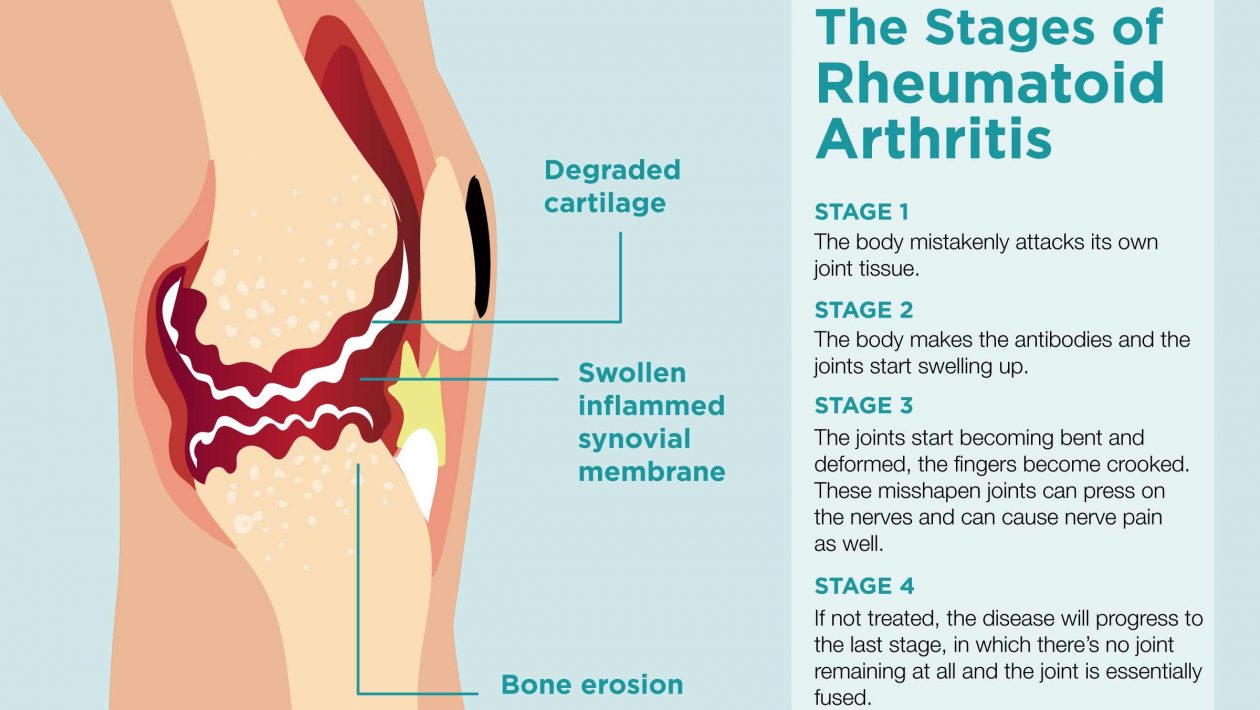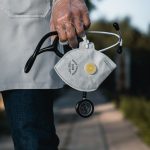Inflammation of rheumatoid arthritis joints is a persistent fiery problem that may affect diseases other than joints. In some people, this disease can damage various body frames, including skin, eyes, lungs, heart, and veins.
Immune system problems are rheumatoid joint inflammation, which occurs when your invulnerable framework mistakenly attacks your body tissues.
https://www.youtube.com/watch?v=1ploeHqpx3M
Contrary to the damage caused by osteoarthritis to mileage, rheumatoid arthralgia affects the joints' covering layer, causing painful expansion, which may eventually lead to bone disintegration and joint deformation.
The exacerbations associated with rheumatoid arthralgia can also damage different parts of the body. Although the new prescription has dramatically improved treatment options, in any case, severe rheumatoid joint pain can lead to actual incapacity.
Table of Contents
Indications of rheumatoid arthritis
Signs and signs of rheumatoid arthritis joint inflammation may include:
The joints are delicate, warm, and swollen.
Joint tightness is usually worse in the morning and after sleep.
Tiredness, fever, and loss of hunger
Early rheumatoid joint pain usually affects your milder joints first, especially the joints that connect your fingers to your hands and toes to your feet.
As the infection progresses, its manifestations regularly spread to the wrists, knees, calves, elbows, hips, and shoulders. Many times, signs occur in similar joints on both sides of the body.
About 40% of people with rheumatoid arthralgia also experience signs and indications that do not include joints. Rheumatoid arthralgia can affect many non-articular structures,
including:
skin
eye
lung
heart
kidney
Salivary organs
Nerve tissue
marrow
vein
The severity of symptoms and signs of rheumatoid arthralgia may fluctuate and may even reverberate back and forth. When the growth and pain of infection become blurred or disappear, the period of expanding infection action (called flares) will be replaced by a period of relative relief. In the long term, rheumatoid arthralgia can deform joints and move abnormally.
When to see an expert
If you experience distress and joint expansion, please meet with your primary care doctor.
the reason
See rheumatoid joint inflammation and osteoarthritis.
Rheumatoid Arthritis and Osteoarthritis
Rheumatoid joint inflammation occurs when your cold frame invades the synovium, covering all joint layers.
The subsequent stimulation thickens the synovium, which can eventually destroy the ligaments and bones in the joint.
The ligaments and tendons that hold the joints together weaken and stretch. The joints gradually lose their shape and arrangement.
Experts don't have the foggiest idea of the beginning of this cycle, although there may be a genetic part. Although your qualities cannot cause rheumatoid arthritis, they will make you more helpless with ecological factors (such as certain infections and microbial pollution), which may cause diseases.
Risk factors of rheumatoid arthritis
Variables that may increase the risk of rheumatoid joint inflammation include:
Your sex. Ladies will almost certainly cause rheumatoid joint inflammation than men.
Age. Rheumatoid joint inflammation can occur at any stage of life, but it is most common in middle age.
Family descent. If your relative has rheumatoid arthritis, it may increase the risk of the disease.
Smokes. Smoking increases the risk of rheumatoid joint pain, especially if you have a genetic predisposition to increase infections. Smoking also gives the impression that it is related to more obvious disease severity.
Natural opening. Although the effect is not visible, some spaces (such as asbestos or silica) may pose a risk of rheumatoid joint inflammation. Workers in crisis are required to clear the World Trade Center's malfunctions and are at higher risk of immune system diseases (such as rheumatoid joint inflammation).
Full. In general, individuals who are overweight or obese, especially young women aged 55 and older, seem to be more likely to develop rheumatoid arthritis to some extent.
inconvenience
Rheumatoid joint pain increases the risk of:
Osteoporosis. Rheumatoid joint pain itself, and certain medications used to treat rheumatoid joint pain, can increase your risk of osteoporosis, a disease that weakens your bones and makes them more prone to cracking.
Rheumatoid knob. These hard tissue knocks are usually formed in places where pressure is concentrated, such as the elbow. Nevertheless, these knobs can still be framed anywhere in the body, including the lungs.
Dry eyes and mouth. Individuals with rheumatoid joint inflammation are more likely to develop Sjogren's disease, a problem that reduces the moisture level of your eyes and mouth.
Disease. The actual illness and the large number of prescriptions used to combat rheumatoid joint inflammation may invalidate the harmless framework, leading to increased pollution.
Abnormal body structure. Individuals with rheumatoid joint inflammation, even individuals with a typical bodyweight record (BMI), usually have a higher degree of fat to elongated masses.
Carpal tunnel passing condition. If rheumatoid arthralgia affects your wrists, this stimulus can compress the nerves that serve most of your hands and fingers.
Heart problems. Rheumatoid arthralgia can exacerbate your risk of consolidating and obstructing your blood supply, just like a cyst that envelops your heart worsens.
Pulmonary disease. Individuals with rheumatoid arthralgia are at risk of exacerbating and aggravating lung scarring, which may cause discomfort for reformists.
Lymphoma. Rheumatoid arthralgia increases the risk of lymphoma, a hematological malignant tumor that gathers in the lymphatic framework.
the reason of rheumatoid arthritis
No one knows what caused the insensitive framework to fail.
A few people seem to have a genetic element, making it more likely to appear. One hypothesis is that in individuals with this genetic component, microscopic organisms or infections will trigger RA.
In RA, the safety framework's antibodies attack the synovium, which is the joint's smooth coating. When this happens, it can cause torture and aggravation.
Stimulation will thicken the synovial membrane. Ultimately, as long as it is left untreated, it can attack and destroy the ligaments, which are connective tissues that cover bones' closure.
The ligaments and tendons that hold the joints together can also weaken and stretch. Eventually, the joints lose their shape and alignment. The harm can be severe.
Risk factors
The U.S. Centers for Disease Control and Prevention (CDC) pointed out that individuals at higher risk of developing RA may combine the following:
60 years old or above
Is female
Has an apparent genetic attribute
Never pregnant
Have weight
Smoking, or youth guardian smoking
complex
People with RA are at higher risk in several different situations, including:
Coronary heart disease
Flamboyant
People with RA also have a higher risk of diabetes and high blood pressure.
Common injuries caused by RA may make daily exercise difficult. RA may also be abnormal. Usually, when a person does not experience heavy fog.
This vulnerability may indicate:
Sadness, tension, and stress
Business trouble
The risk of establishing additional conditions is greater:
Carpal tunnel condition: This is a kind of nerve injury from wrist nerve pressure and interference. Side effects include injuries to fingers, thumbs, and hands, death, and shaking.
Irritation: This may affect the lungs, heart, veins, eyes, and different parts of the body.
Rupture of the ligament: Inflammation of the ligament may cause cracking, especially on the finger's back.
Cervical spondylosis: Dislocation of the neck or cervical joints will increase the tension of the spinal cord. This leads to reduced versatility and development pain. With the development of RA, the risk of cervical myelopathy increases.
Vasculitis: Inflammation of the veins weakens, thickens, tightens, and scars them. This may affect the blood flow of the tissues and may affect the organ capacity.
Vulnerable to contamination: People who are particularly susceptible to colds, flu, pneumonia, and other diseases, especially if they are taking immunosuppressants to monitor RA. People with rheumatoid arthritis should ensure their immunity, such as the influenza vaccine.
determination
In the beginning, it may be difficult for experts to analyze RA because it looks like a different situation. In any case, early analysis and treatment are essential to control the development of the disease.
CDC came up with a conclusion and launched a feasible treatment system within six months of the beginning of the indication.
The expert will treat the individual's exacerbating symptoms and ask them how long they have been with the disease and how extreme it is. They will also complete actual assessments to check for any expansion, real obstacles, or disfigurement.
They may suggest some tests.
blood test
Red blood cell sedimentation rate (ESR or sed rate): This test can check the body's degree of stimulation. It can measure the separation speed of red platelets and serum in a test tube within a set time. If red platelets settle rapidly due to silt, the erythrocyte sedimentation rate will increase. The test is not exact for RA, and it is also beneficial for other fiery conditions or diseases.
C receptor protein (CRP): The liver produces CRP. Higher CRP levels indicate that the body will aggravate the condition. For RA and CRP may occur in other irritating diseases or diseases, the test is not exact.
Weakness: Many people with RA also have disadvantages. When there are too many red platelets in the blood, paleness occurs. Red platelets transport oxygen to the tissues and organs of the body.
Rheumatoid factor: If there is an immune response called rheumatoid factor in the blood, it can prove that RA is available. In any case, not everyone with RA has a positive test for this factor.
Imaging scan and X-ray
X-rays or MRI of the joints can help experts identify which joint pain is available and screen the progress of RA after some time.
Indicative measures
In 2010, the American College of Rheumatology proposed the accompanying rules for the diagnosis of RA:
Any case, a joint can grow without other reasons
In any case, the results of a blood test indicate the presence of RA.
You can use these expressions for a month and a half.
Conditions for comparative performance
Experts should identify RA from different conditions with comparative indications, for example,
gout
Osteoarthritis
lupus
Psoriasis joint inflammation
treatment
Relieving discomfort and various drugs can reduce symptoms.
Even if someone accidentally obtains an RA analysis result. So, the expert may suggest it to a rheumatologist, and he will offer a treatment plan.
There is currently no treatment for RA, but treatment can help:
Reduce joint discomfort
Reduce torture
Limit insufficiency caused by torture, joint injury, or disfigurement
Moderately overwhelm or prevent joint injuries.
Alternatives include medications, active care, word-related treatments, guidance, and medical procedures.
drug
Also, some medications can help relieve symptoms and moderate disease exercise.
Non-steroidal sedatives (NSAID): You can buy over-the-counter drugs from pharmacies. Models include Advil, Motrin, and Aleve. Long-term use and high doses may cause injuries, stomach ulcers, high blood pressure, and kidney and liver problems.
Corticosteroids: So, these drugs reduce torture and aggravation and may reduce damage to the back joints, but they cannot repair RA. If the NSAID does not work. Also, the specialist may inject steroids into the joints. Help is usually quick, but the impact is variable. It may last for half a month or a few months, depending on the severity of the indication.
Corticosteroids can help with substantial side effects or short-term attacks. Long-term use of corticosteroids can produce real results. These include waterfalls, osteoporosis, glaucoma, diabetes, and strengthening.
Infection-altering rheumatoid arthritis drugs (DMARDs)
DMARD can ease RA's movement and prevent lasting damage to joints and different tissues by intervening in an overactive insensitive frame. In most cases, individuals will use DMARD forever.
Individuals should initially use it, but it may take four to six months to enjoy these advantages fully.
Before finding the most suitable DMARD, some people may need to try various DMARDs.
Models include Leflunomide (Arava), methotrexate (Rheumatrex, Trexall), Sulfasalazine (Azulfidine), Minocycline (Dynacin, Minocin), and Hydroxychloroquine (Plaquenil).
So, the results may include liver damage and safety-related issues, such as hidden bone marrow and a higher risk of severe lung disease.
Different types of immunosuppressants include cyclosporine (Neoral, Sandimmune, Gengraf), azathioprine (Imuran, Azasan), and cyclophosphamide (Cytoxan).
Tumor spoilage factor-α inhibitor (TNF-α inhibitor)
Also, the human body produces tumor spoilage factor-α (TNF-alpha), a burning substance.
TNF-α inhibitors can prevent exacerbations. So, they can reduce torture, firmness in the morning, and swollen or delicate joints. Most of the time after starting treatment, individuals will notice an improvement in symptoms for 14 days.
Models include (Enbrel), infliximab (Remicade), and adalimumab (Humira).
Possible outcomes include:
Higher disease risk
Blood problems
Congestive cardiovascular failure
Demyelinating infections, including regularly ensuring the demyelination of the nerve chain
Lymphoma
Word related processing
Word-related experts can help the person learn and complete a powerful way of daily tasks. Also, this will limit the pressure to complicated joints.
For example, a person with sharp fingers may figure out how to use a uniquely formulated grip and snatch device.
Medical procedure
Even if drugs and active rehabilitation methods do not help. So, the specialist can prescribe medical procedures to:
Repair injured joints
Correct disfigurement
Reduce torture
So, the attached method is possible:
Joint replacement surgery: In total joint replacement surgery, experts remove the damaged area and insert metal and plastic prostheses or artificial joints.
Ligament repair: Even if the ligament is loose or ruptured around the joint, medical procedures may help it rebuild.
Synovectomy: Also, this system involves sliding the synovium out if it gets worse and causes torture.
Arthrodesis: So, the specialist will combine bones or joints to reduce torture and realign or fix the joints.









